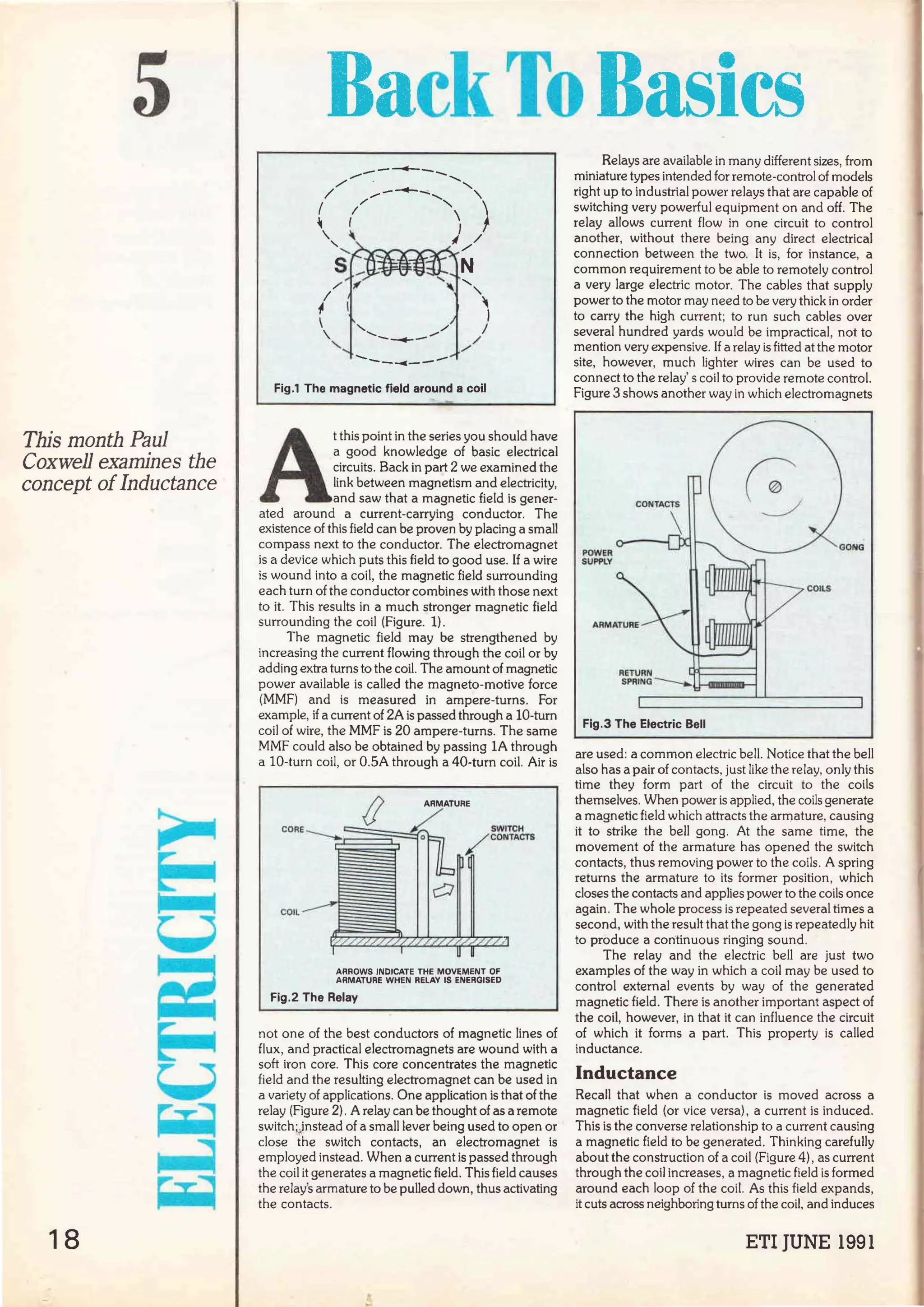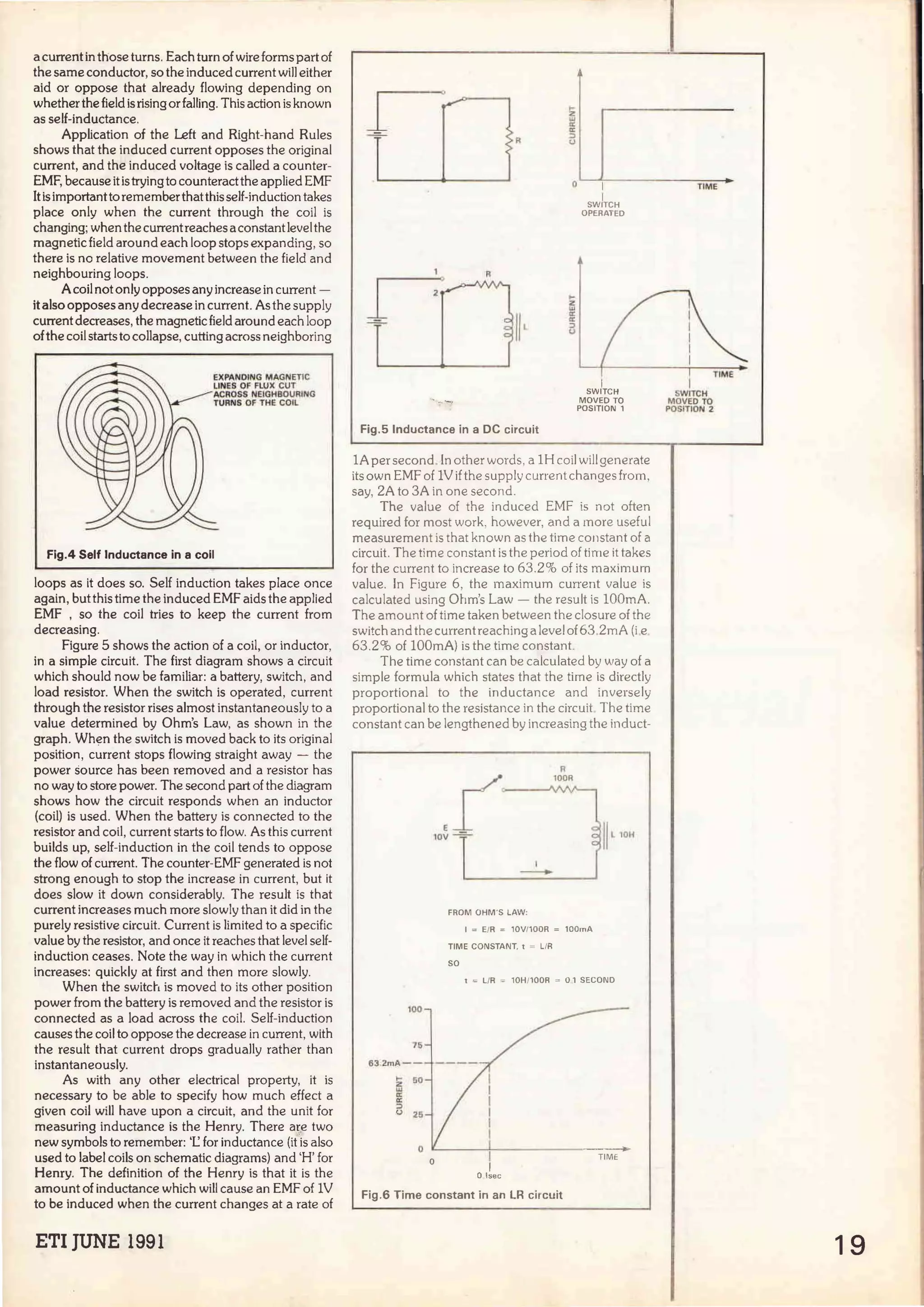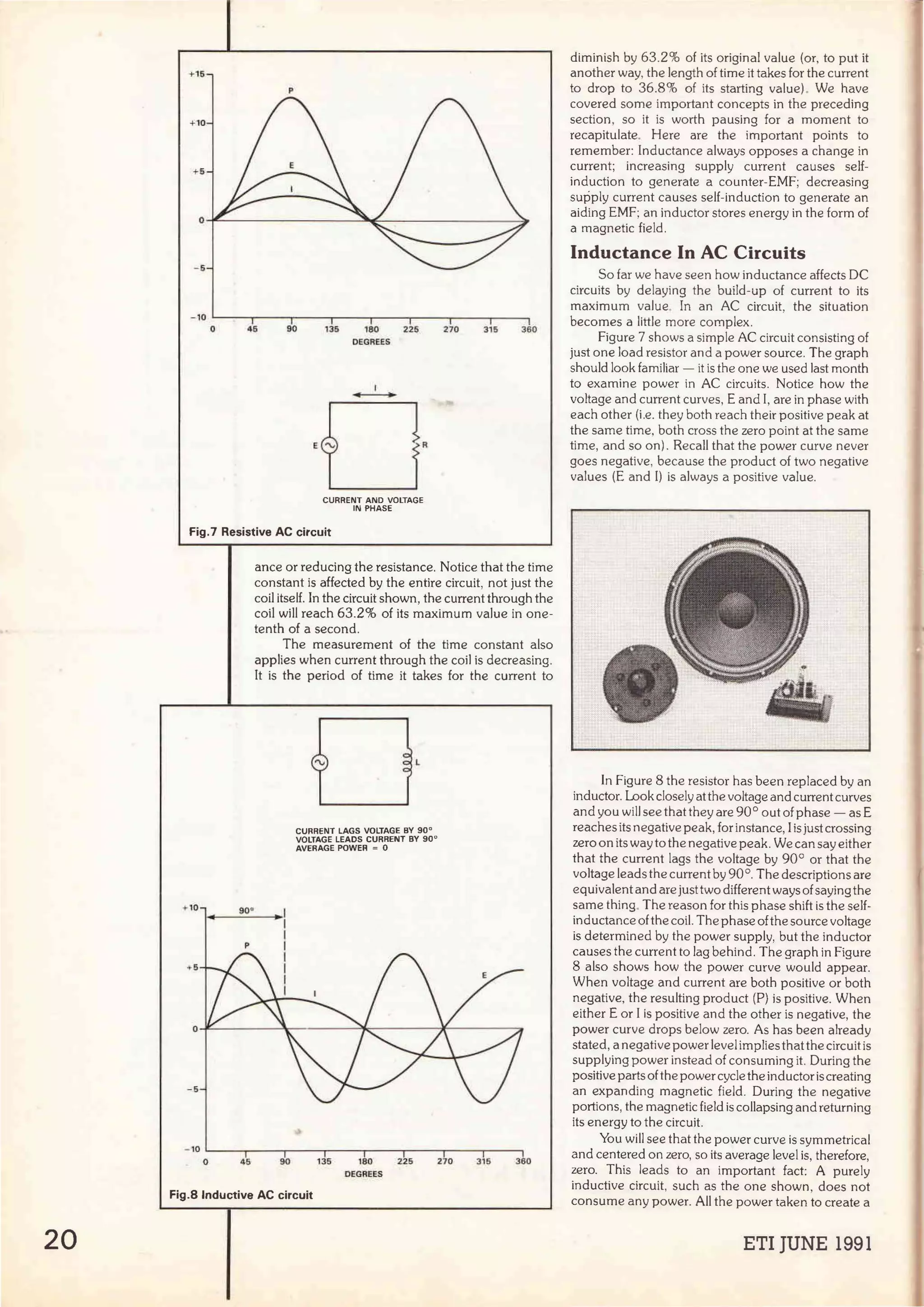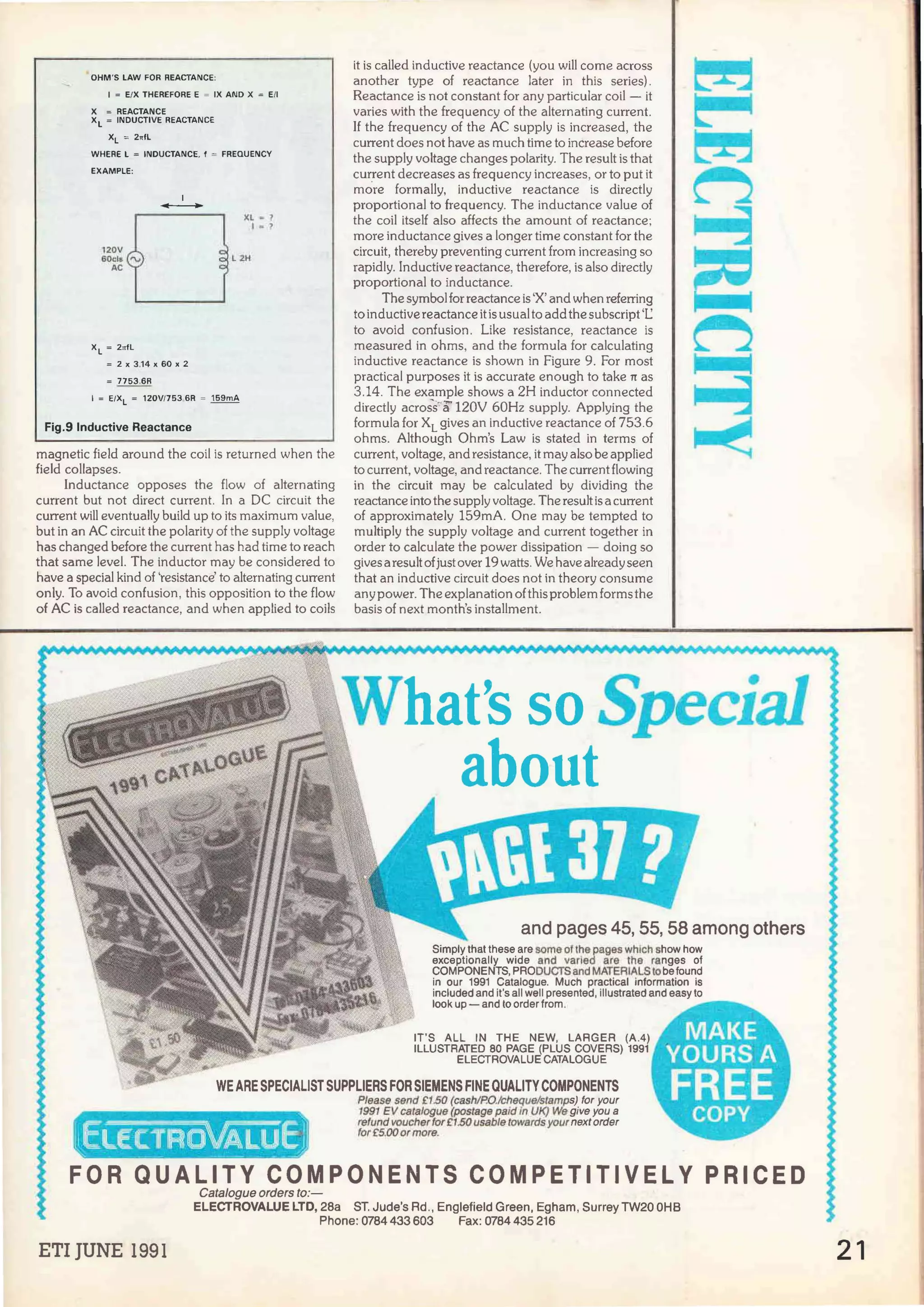1) An inductor opposes changes in current through self-induction, generating a counter-EMF when current increases or decreases. This causes the current in an AC inductive circuit to lag 90 degrees behind the voltage.
2) Inductive reactance represents an inductor's opposition to AC current, and increases with frequency and inductance. It can be calculated using XL=2πfL.
3) A purely inductive AC circuit does not consume any power on average, as energy stored in the magnetic field during one half of the cycle is returned during the other half.



